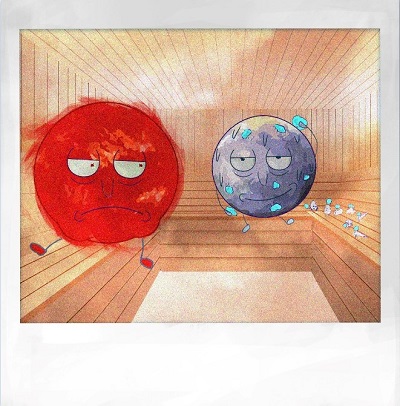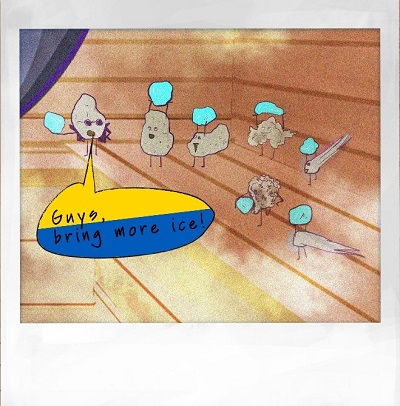Ruimtestof, asteroïden en kometen volstaan voor al het water op Mercurius
Mercurius herbergt waterijs in de diepste kraters van zijn poolgebieden, maar het is onduidelijk hoe die watermoleculen op de planeet terecht zijn gekomen. Een nieuwe simulatie door onderzoekers van de RUG en SRON laat nu zien dat invallende kleine hemellichamen zoals asteroïden, kometen en ruimtestof genoeg water met zich meedragen om alle aanwezige ijslagen te vullen. De studie vormt de basis voor nieuw onderzoek naar water op planeten buiten ons zonnestelsel. Het onderzoek is gepubliceerd in het tijdschrift Icarus op 19 april.

We weten al tientallen jaren dat er water aanwezig is op Mercurius. Het is logisch te denken dat dit alleen kan bestaan in de vorm van waterdamp. De planeet heeft immers geen atmosfeer, dus vloeistoffen zijn uitgesloten vanwege een gebrek aan luchtdruk. En Mercurius staat bijna driemaal dichter bij de Zon dan de Aarde, dus ijs lijkt ook erg onwaarschijnlijk. Maar de planeet kent diepe kraters in de poolgebieden, met troggen die eeuwig in duisternis zijn gehuld, slechts verlicht door het zwakke schijnsel van de Melkweg tegen de achtergrond van het diepzwarte heelal. Deze obscure plekken bieden een veilige haven aan ijslagen van vele meters dik op de dichtste planeet bij de Zon. Dan blijft de vraag over: hoe zijn die watermoleculen op Mercurius beland?

Eerste auteur Kateryna Frantseva (SRON/RUG) heeft een algoritme ontworpen dat meteorietinslagen in de vorm van asteroïden, kometen en interplanetaire stofdeeltjes simuleert. Het blijkt dat deze kleine hemellichamen gedurende een periode van een miljard jaar genoeg water naar het oppervlak van Mercurius brengen om de hoeveelheid te verklaren die we nu zien.
Frantseva: ‘We kunnen endogene waterbronnen niet uitsluiten, zoals vulkanische activiteit en gassen die ontsnappen uit de korst en mantel, maar dit resultaat laat zien dat we ze niet nodig hebben. We kunnen volstaan met inslagen van kleine hemellichamen om het water te verklaren dat we op Mercurius zien.’ De simulatie toont dat interplanetaire stofdeeltjes verreweg de zwaarste lasten dragen, met ruim tienduizend kilogram per jaar. Asteroïden en kometen leveren jaarlijks elk ongeveer duizend kilogram water.
De simulatie biedt een basis voor nieuwe theoretische modellen voor het aanleveren van water op exoplaneten—planeten buiten ons Zonnestelsel. Deze kunnen astronomen vergelijken met toekomstige observaties, bijvoorbeeld die van de recent gelanceerde James Webb ruimtetelescoop. Daarmee zijn mogelijk de vingerafdrukken van watermoleculen te zien in het spectrum van licht dat asteroïdegordels in exoplaneetsystemen uitzenden als ze het licht van hun moederster weerkaatsten.
Eerste auteur Kateryna Frantseva is een Oekraïense wetenschapper werkzaam in Nederland. Ze is onderdeel van een netwerk van Oekraïense vrijwilligers in de Nederlandse academische wereld die hun thuisland ondersteunen. Helpen kan via een online donatie.
Tekst: SRON
